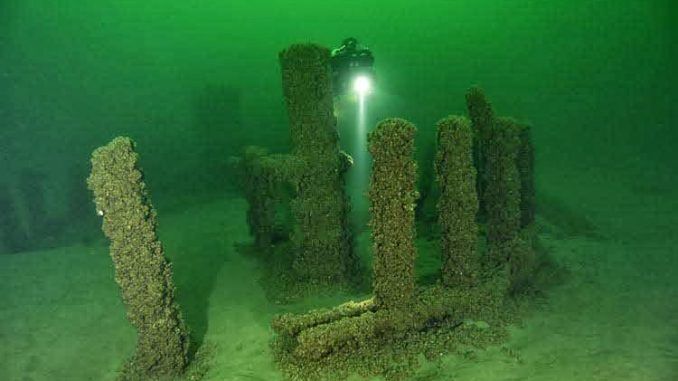
A researcher has found a Stonehenge style megalithic site at the bottom of Lake Michigan, alongside a boulder with a prehistoric carving of a mastodon.
Mark Holley, professor of underwater archeology at Northwestern Michigan University College, discovered the megalithic site as he travelled across the lake in a ship equipped with sonar technology to examine old shipwrecks.
Americanintelligencereport.com reports:

BYPASS THE CENSORS
Sign up to get unfiltered news delivered straight to your inbox.
You can unsubscribe any time. By subscribing you agree to our Terms of Use
While combing Grand Traverse Bay they observed unique rock formations resembling Stonehenge, and rocks with strange engravings, one which Holley believes to be a Mastodon.
“When you see it in the water, you’re tempted to say this is absolutely real,” Holley told reporters.
Experts shown pictures of the boulder holding the mastodon markings have asked for more evidence before confirming the markings are an ancient petroglyph, said Holley.
“They want to actually see it,” he said.
The formation, if authenticated, wouldn’t be completely out the ordinary. Stone circles and otherpetroglyph sites are located in the Great Lakes area.
Ancient structures underneath large masses of water are not all that uncommon around the planet. There are over 100 cities at the bottom of the Mediterranean Sea and even more at the bottomour oceans.

